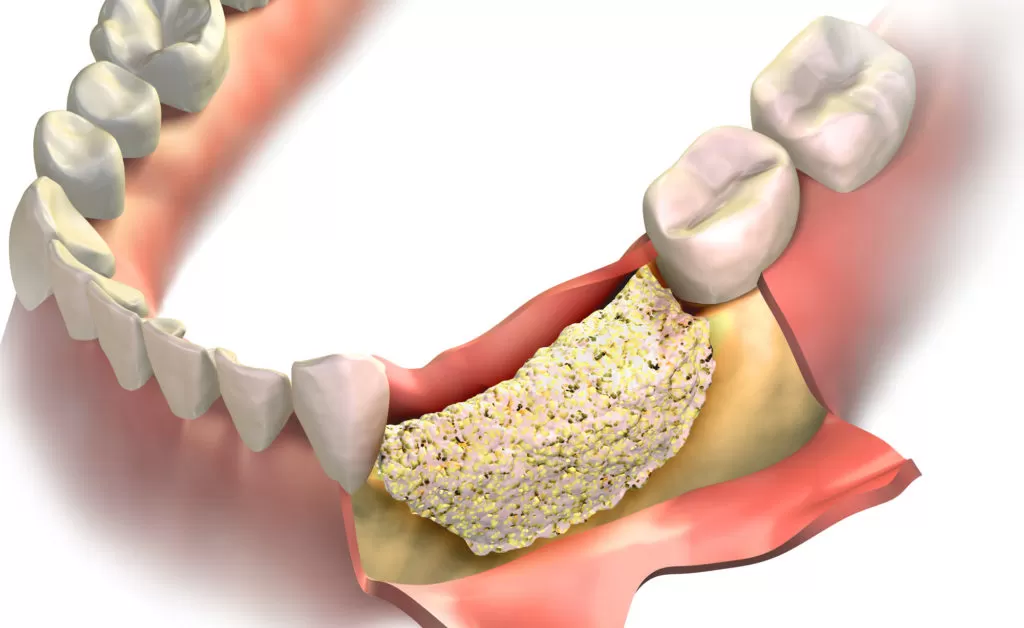
Ridge augmentation is a bone grafting procedure designed to restore jawbone height and width for dental implant placement. This oral surgery, performed under local anesthesia, rebuilds the alveolar ridge using bone graft materials such as autogenous, allogeneic, xenogeneic, or synthetic substitutes.
The procedure begins with a 3D CBCT scan to assess bone density and volume, determining whether bone augmentation is necessary. During the surgery, an incision is made to expose the alveolar ridge, and bone grafts are placed to restore lost bone. A biocollagen membrane is applied over the graft to promote healing and prevent soft tissue interference. After the procedure, the graft integrates with the natural bone over a period of four to six months, ensuring a stable foundation for dental implants.
Recovery involves managing pain with antibiotics and pain relievers, following a soft food diet, and maintaining careful oral hygiene to prevent infection. The surgery typically lasts 30 to 60 minutes and has a high success rate, making it a crucial step for patients requiring dental implants after bone loss.






